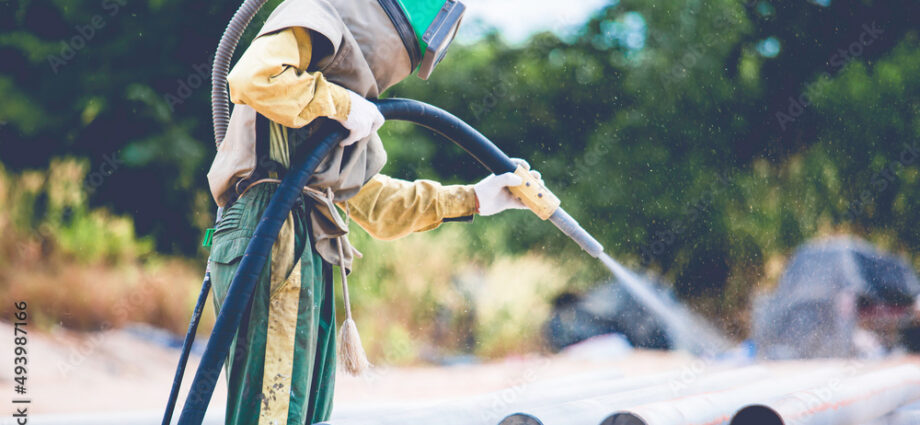Sandblasting is a popular surface preparation method that is used in various industries, from automotive to construction, to clean, restore, and prepare surfaces for further treatment. The process involves the use of abrasive materials, such as sand, glass beads, or steel shot that are propelled at high velocity against a surface using compressed air or water. In this blog, we will explore the top benefits of sandblasting and why you should consider it for your next project.
Efficient Surface Preparation
Sandblasting is an efficient and effective method for preparing surfaces for further treatment, such as painting, coating, or bonding. By using abrasive materials at high velocity, sandblasting can remove rust, corrosion, dirt, and other contaminants from the surface, leaving it clean and smooth. Sandblasting can also be used to create a rough surface texture that can improve the adhesion of coatings or paint.
Versatility
Sandblasting is a versatile process that can be used on a wide range of materials, including metal, concrete, wood, and glass. It can be used to clean, restore, and prepare surfaces for various applications, from automotive parts to industrial equipment. Sandblasting can also be used to create intricate designs or etchings on glass or metal surfaces, making it a popular choice for art and decoration.
Cost-Effective
Compared to other surface preparation methods, such as chemical stripping or manual sanding, sandblasting is a more cost-effective solution. It can be completed quickly and efficiently, reducing labor costs and downtime. Sandblasting also requires minimal preparation time, as it can be done on-site and does not require extensive setup or cleanup.
Environmentally Friendly
Sandblasting process is a more environmentally friendly alternative to chemical stripping, which involves the use of harsh chemicals that can be harmful to the environment and human health. Sandblasting uses abrasive materials that are non-toxic and do not release harmful chemicals into the air or water. Additionally, sandblasting can be done with recycled materials, such as crushed glass or aluminum oxide, which reduces waste and conserves natural resources.
Improved Safety
Sandblasting is a safer alternative to manual sanding or grinding, which can create dust and debris that can be harmful to workers’ health. Sandblasting is a closed process that uses protective equipment, such as respirators and gloves, to minimize the risk of exposure to abrasive materials. It also creates less dust and debris, reducing the risk of slip and fall accidents.
Longer Lasting Results
Sandblasting provides longer-lasting results compared to other surface preparation methods. By removing rust, corrosion, and other contaminants from the surface, sandblasting can improve the durability and lifespan of the treated material. Sandblasting can also be used to create a surface texture that can improve the adhesion of coatings or paint, resulting in a more durable finish.
Choosing the Right Abrasive Material
One of the key factors that determine the success of a sandblasting project is the choice of abrasive material. Different materials have different hardness, shape, and size, which can affect the efficiency and quality of the sandblasting process. For example, soft abrasives, such as baking soda or plastic beads, are ideal for delicate surfaces, such as wood or fiberglass, while harder abrasives, such as aluminum oxide or garnet, are better suited for metal or concrete surfaces. The size and shape of the abrasive also affect the velocity and impact of the sandblasting, which can affect the surface texture and finish.
Proper Surface Preparation
While sandblasting is an effective method for surface preparation, it requires proper planning and execution to ensure optimal results. Before starting the sandblasting process, it’s important to assess the condition of the surface, identify the type and severity of contaminants, and determine the appropriate abrasive material and pressure. Improper preparation or execution can lead to damage to the surface or incomplete removal of contaminants, which can affect the quality and durability of the final treatment.
Protective Measures
Sandblasting involves the use of high-pressure abrasive materials, which can create dust, debris, and noise. To ensure the safety of the workers and the surrounding environment, it’s important to implement proper protective measures, such as using personal protective equipment, such as respirators, gloves, and safety glasses, installing proper ventilation systems, and following proper safety protocols. It’s also important to minimize the impact of sandblasting on the surrounding area, such as covering nearby objects and controlling the spread of dust and debris.
Post-treatment Maintenance
Sandblasting is just the first step in surface preparation, and proper maintenance is essential to ensure the longevity and quality of the final treatment. After sandblasting, it’s important to remove any residual abrasive material or dust, neutralize any chemical residue, and apply the appropriate treatment, such as painting or coating, as soon as possible. Proper maintenance can also include regular inspections, cleaning, and touch-ups to ensure the surface remains clean, smooth, and durable.
Sandblasting is a versatile, cost-effective, and environmentally friendly surface preparation method that can provide efficient and long-lasting results. Whether you need to clean, restore, or prepare surfaces for further treatment, sandblasting is a reliable solution that can save you time, money, and effort. If you’re considering sandblasting for your next project, make sure to work with a reputable and experienced sandblasting service provider that can ensure a safe and effective process.

